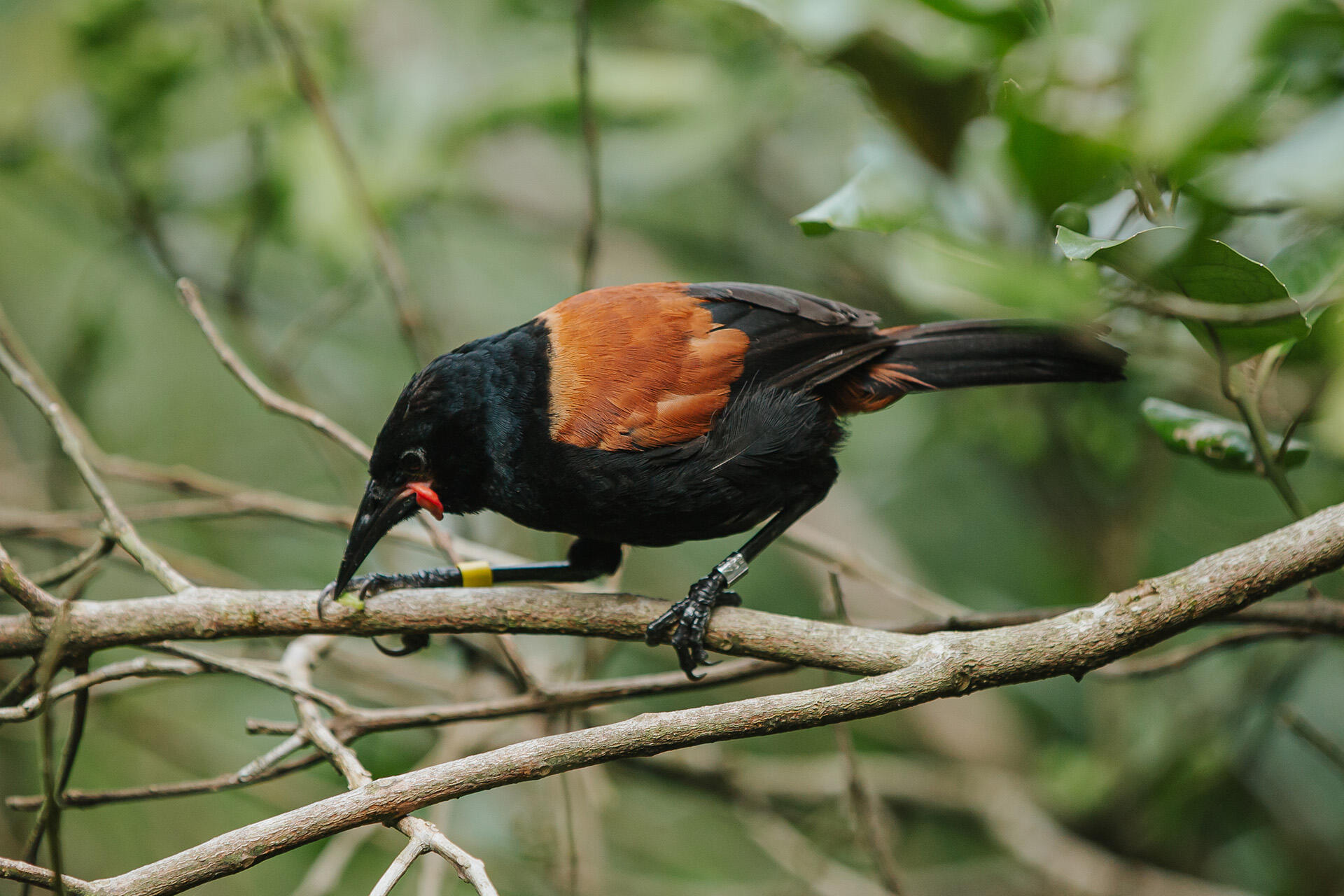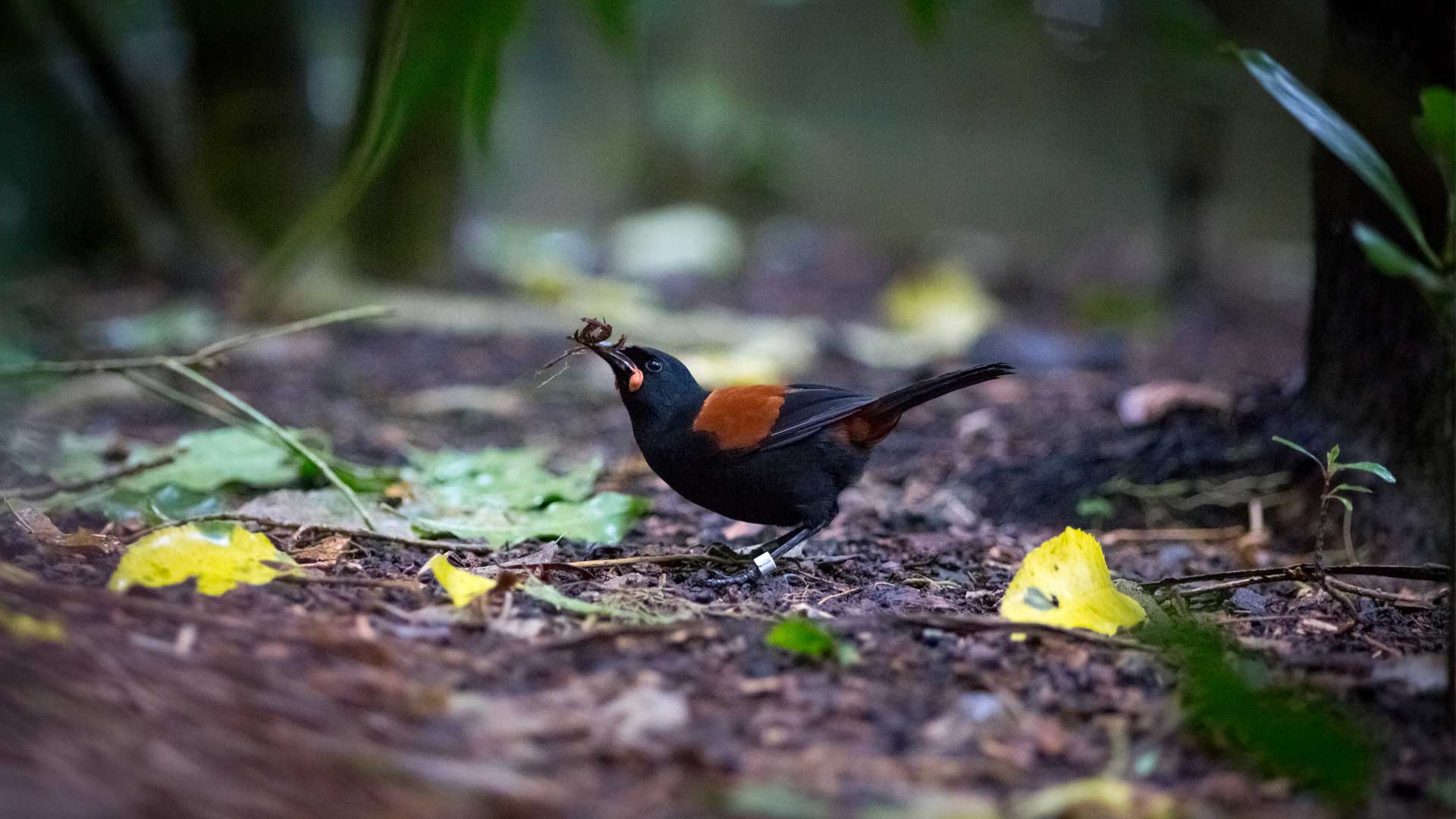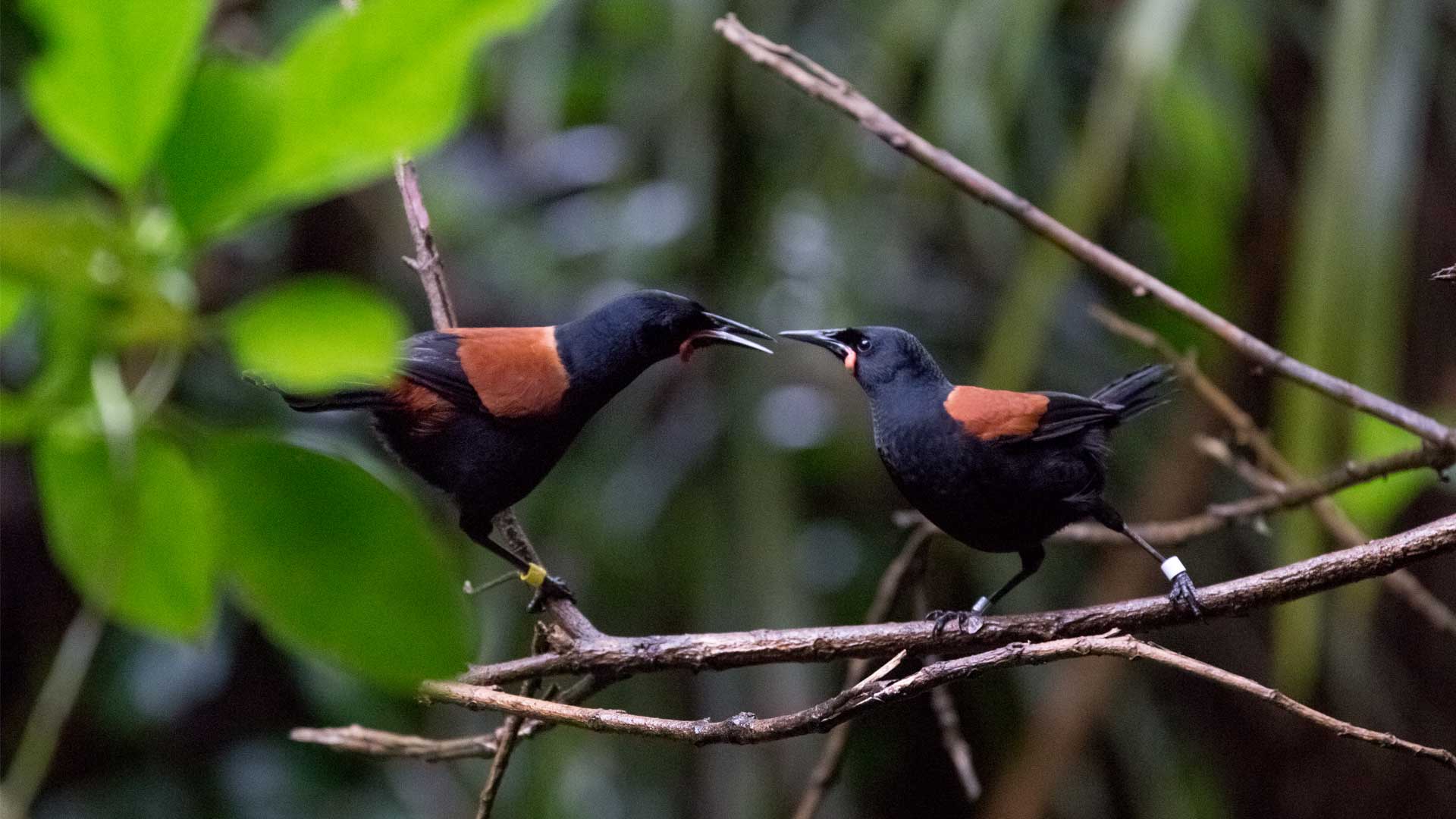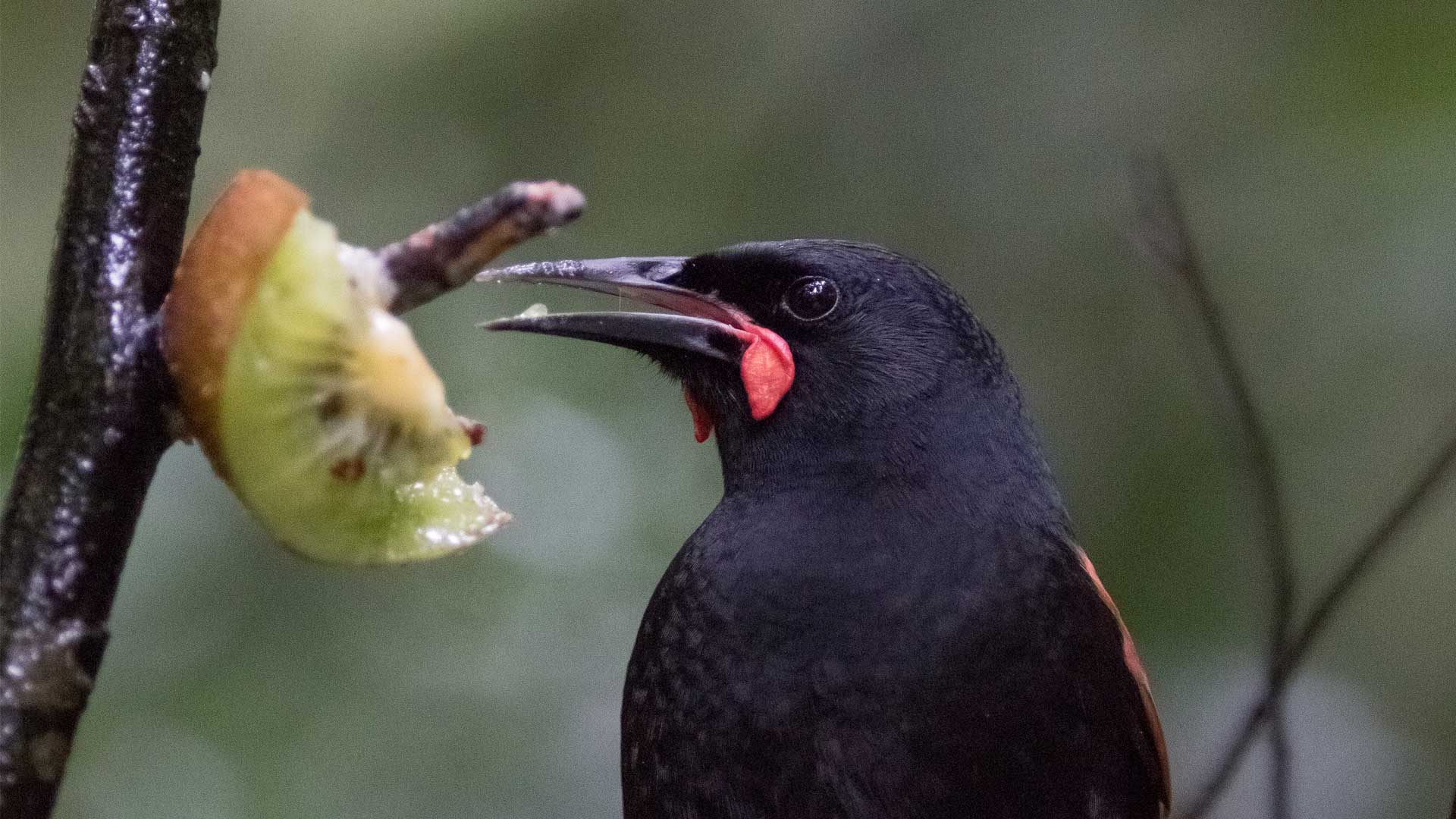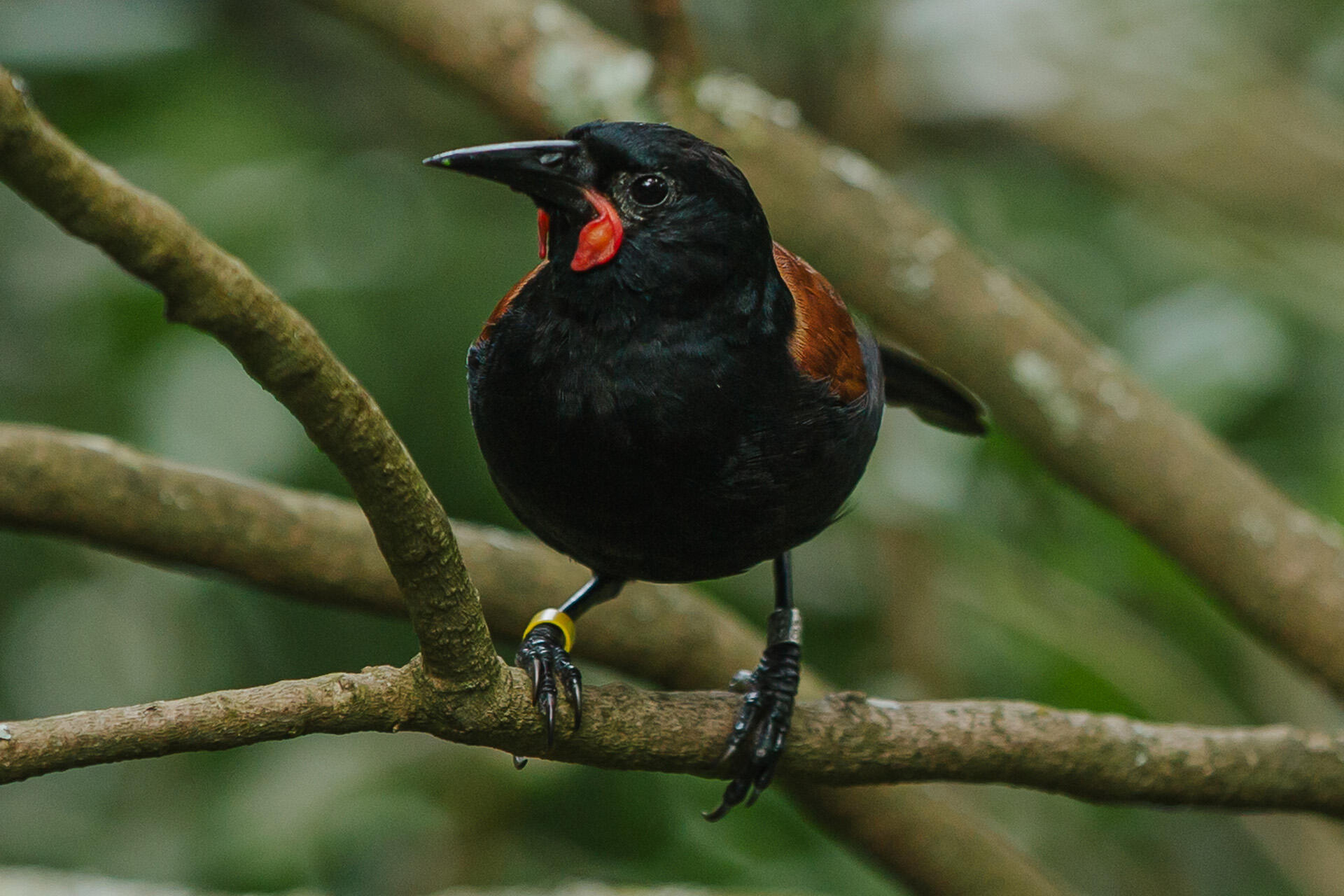Forest forager
The tīeke forages for food from the forest floor all the way to the canopy. They aren’t very strong fliers, so use their stout legs to help them bound through the forest floor as they feed. Using their bills, they chip away at rotten wood, sift through leaf litter, and investigate under cabbage tree skirts for food.
Tīeke are very active and noisy foragers, and often birds such as pīwakawaka (fantail) and pōpokotea (whiteheads) will follow along and feed too as they stir up the forest floor. Their diet mainly consists of grubs, wētā, and other invertebrates, but they also eat fruit and nectar from the forest. They play an important role in the forest by pollinating flowers and dispersing seeds, helping to regenerate food sources in their natural habitat.



